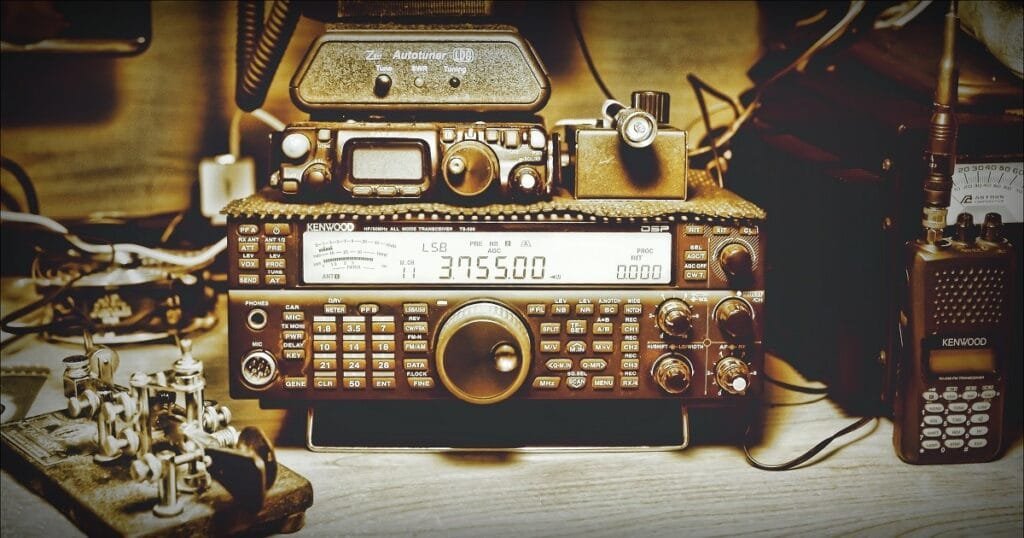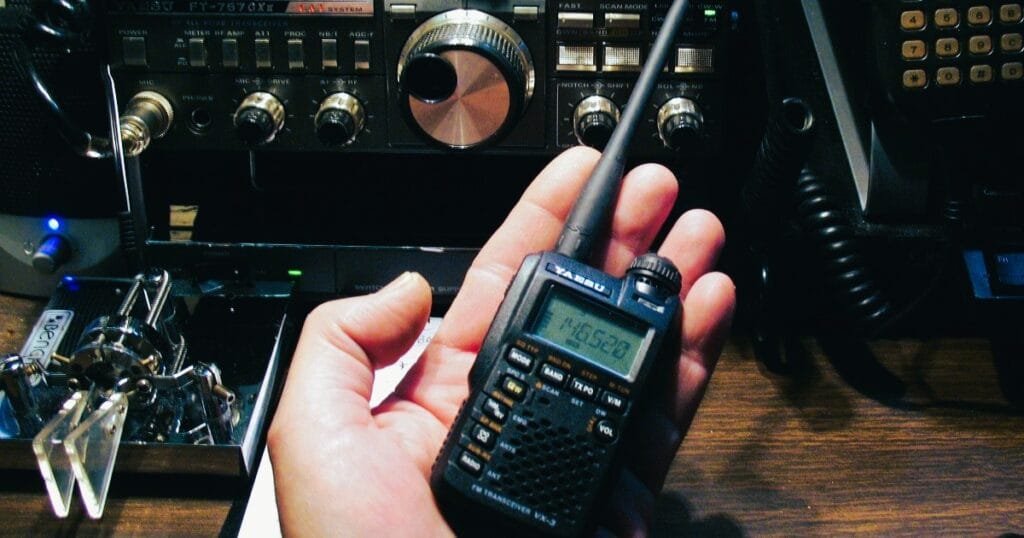Table of Contents
ToggleLong Distance Communication Tips: Ham Radio Base Stations
Hello, TalkieTrail readers! If you’ve been around ham radio for as long as I have, you’ve probably encountered an alphabet soup of equipment, including walkie-talkies, repeaters, and, of course, base stations. While most people can detect a walkie-talkie from a mile away, a base station is not always as obvious. In fact, the mere mention of one may make even seasoned two-way radio fans scratch their heads. Have no fear! Today, we’ll break down the formidable base station, explaining what it is, why you would want one for long distance communication, and the benefits and drawbacks.
Common Questions About Base Stations
Put yourself in the captain’s place. The walkie-talkie is like your handheld radio you communicate with the workers on field; but what about a base station?
You can think of your base station as a command hub for your organized wireless communication world. In technical terms, it is a stationary communication equipment that serves as the radio network’s primary hub for signal transmission and reception. The Big Kahuna connects everyone.
Unlike your reliable two-way radio, which is fastened to your belt and ready to go, a base station is fixed in one location—usually high above, such as a building or a tower. Why so high? Because the higher the antenna, the farther it can broadcast your signals into the ether. Think of it as the radio equivalent of a powerful loudspeaker, amplifying and projecting your signals far and wide to reach a broader audience.
Want to know about setting up a ham radio base station step by step with no steps skipped? Click here.
Key Features of a Base Station
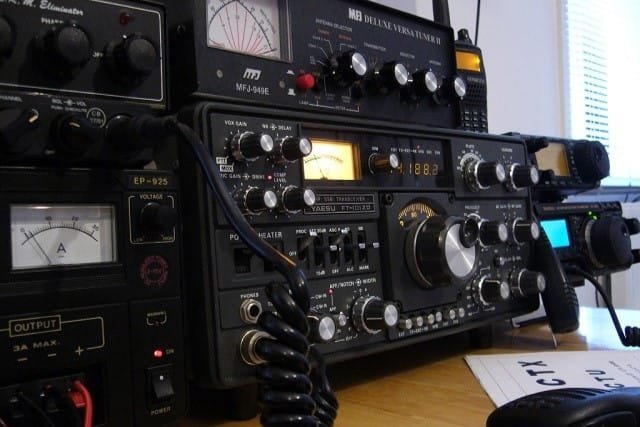
Let’s focus on what makes it tick:
- Fixed Location: A base station is permanently established to provide a reliable and continuous connection point. This bad guy isn’t meant to be tossed in your backpack; it’s designed to remain put.
- High Power Output: Base stations are generally more powerful than the ordinary portable radio. They can send signals more precisely and clearly over longer distances because of their higher power output.
- Multiple Frequencies: These gadgets may function on a variety of frequencies, allowing you to change bands like a DJ switching between radio stations.
- Extended Range: Base stations can cover bigger regions than portable or mobile radios because of their higher antennas and powerful batteries. If your two-way radio is like a torch in the dark, the base station acts as a powerful floodlight, illuminating your communication attempts with more intensity and range.
Advantages of a Base Station: Long Distance Communication
So, why should you put up one? Here are some reasons:
1. Enhanced Range and Coverage
A base station provides an exceptional communication range for long distance communication because of its high altitude and tremendous output. Whether you’re organizing a county-wide emergency response or simply attempting to communicate with a friend on the opposite side of town, a base station will get the message through.
2. Stronger Signal Quality
Let’s face it: nobody enjoys a choppy signal. A base station provides clearer, more dependable communication.It means that you’ll have less annoying moments, as when you keep saying to yourself, “Can you hear me now?” again. This implies you’ll have fewer annoying moments and more of what you truly desire—continuous, crystal-clear conversations free from any communication glitches.
3. Supports Multiple Users
So, you have a large group of users who need to be connected? Not an issue. Base stations allow several users to communicate simultaneously, making them ideal for group activities such as public safety operations, corporate communications, or even a well-organized ham radio net.
4. Stability and Reliability
Because a base station is established in one location, it is less vulnerable to the effects of weather or wandering signals. You receive consistent performance on a daily basis, which is especially crucial when dealing with vital messages.
5. Advanced Features
Many base stations provide a variety of features, including numerous channels, cross-band repetition, and digital modes. These capabilities provide flexibility and usefulness, allowing you to personalize your communication system to your specific requirements.
Drawbacks of a Base Station: The Flip Side of the Coin
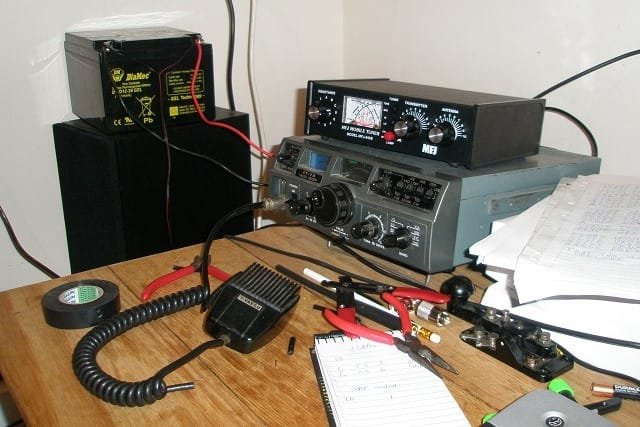
Obviously, it’s essential to acknowledge that things are far from perfect and that there are plenty of obstacles and difficulties in the scenario. Here are a few things to consider before going into the realm of base stations:
1. Lack of Portability
This is a no-brainer: base stations are large, stationary, and not exactly suited for mobility. If you’re searching for anything to bring on your next camping trip, a base station is probably not it.
2. Higher Cost
Base stations aren’t inexpensive. Great power comes at a high cost, and for some, the first expenditure might be rather shocking. However, as they say, you get what you pay for, and premium features and performance are typically connected with higher prices.
3. Installation and Space Requirements
Setting up a base station is not as simple as placing it on your desk. You’ll need to carefully arrange the installation, including mounting the antenna and making room for all of the equipment. If you’re not extremely handy, you could even want expert assistance.
4. Dependency on Power Supply
However, unlike two-way battery radios, base stations usually need to have constant power supply. This makes it prone to power outages. Get a backup power solution (if you live in an area where the lights go out occasionally)
5. Regulatory Considerations
In some countries, a license might be required or the use of base station features could be restricted. Make sure you check what the local standards are, and follow all the rules of your machine functioning before flicking that switch on.
Base Station vs. FMC, or Two-Way Radio
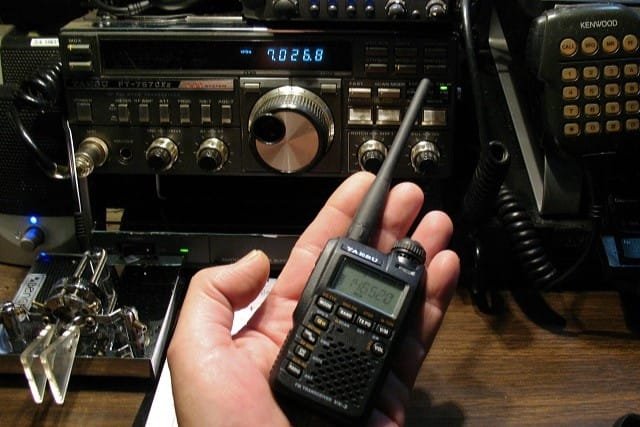
All you need to do is think about your needs, when picking between a base station and using two way radio for long range communication. The ihr-24 is the permanent setup with all of the power and coverage rights, so get your most important antennas on this base station. Best is suited for this sort of fixed site, long-distance emergency communication installations or around a ham shack.
If you need something portable on the other hand—say, if you’re trekking out in nature or doing some work outside—a walkie talkie is a much better option. They are mobile and easy to carry around and so well suited in cases when mobility is the need of the hour.
In the end, which one is best for your long distance communication needs depends on exactly what our setup location and of course budget. So, this makes for the best deal if you are someone who falls under both categories; get one in your house and just carry a two-way radio along.
Find out more about how a two way radio or walkie talkies work at this link.
The Role of Base Station Antennas in Long Distance Communication
One of the most important factors that impact how far and clear your communications can reach, is a base station antenna. The right antenna for your base station could be the difference between a strong and clear signal or one that includes lots of interference.
Types of Antennas
Vertical Antennas: Most base station antennas (especially omnidirectional) are vertical. These types of antenna have a roundup 360 coverage. That’s why it can send and receive signals from all directions. Also they are very easy to install.
Yagi Antennas: Yagi antennas are one directional antenna. They are best used for long distance communication where we know the elevation points from where to where we want to communicate. They provide great performance to transmit and receive signals if they are sent from a single direction.
Because they focus the signal in one direction, long-range communication requires these antennas.
Dipole Antennas: These are both flexible and efficient, so they tend to be very popular among ham radio operators. They offer unbeatable performance but both for local and long distance communication.
Think about your frequencies or antenna location, or what you want to accomplish by using a certain one. Does even a small antenna work better? Check here.
The Lifeline of Communication Species: Power Supply
To use a base station and keep it steady, we need an uninterrupted power source. In contrast to a portable two-way radio, which can be recharged, a base station depends on a constant and dependable power source.
Considerations for Power Supply
Voltage Stability: Get the proper voltage status to your base station from a power source. Over fluctuations that can ruin performance and maybe even kill your equipment.
Backup Power Source: If you lose power, your station could keep operating by relying on backup (a generator or battery bank).
A predictable power source means your base station doesn’t have to start and stop, which can cause glitches in critical communications.
Permits and Rules: Essential Information You Should Know
In some countries, like the US and others though, you may require a license from your country’s communication authorities to operate a base station (especially high power ones) on dedicated ISM bands. Ham radio operators in the United States, for instance, are required to be licensed by the Federal Communications Commission (FCC) before they can legally transmit on their equipment. This helps to ensure that operators understand radio procedures, frequency allocations and power limits in order not to cause interference with other bands.
If you are deploying a base station, check with your local communication authority about the license requirements before installing. So if you are uncertain about the rules regarding radio communication, it is better to play safe now than face issues and fines down the track.
Conclusion: Is a Base Station Right for You?
Base stations are the foundation of many communication networks, providing greater range, signal quality, and dependability. While they have limits, such as cost and mobility, the advantages generally exceed the downsides, particularly for users who want a stable and robust communication option.
Whether you’re coordinating emergency services, running a company, or simply exploring the world of amateur radio, a base station might be the key to unlocking better, more dependable communication.
Thank you for stopping by TalkieTrail. We appreciate hearing from our readers, so please leave any questions, experiences, or advice concerning base stations in the comments section below. Be sure to explore the rest of TalkieTrail.com for more valuable insights and information on all things related to radio!
